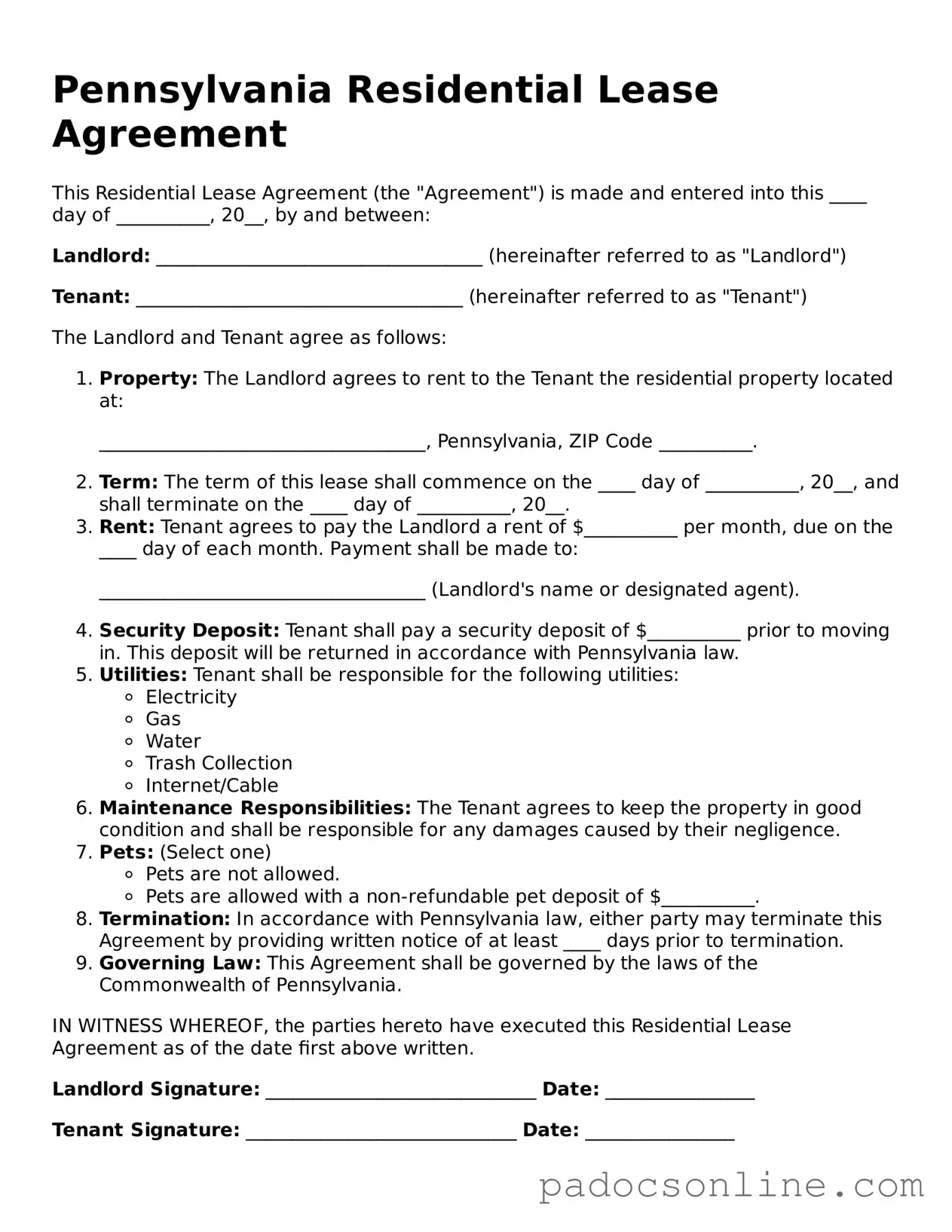Filling out the Pennsylvania Residential Lease Agreement form can be straightforward, but mistakes are common. One frequent error is failing to include the correct names of all tenants and landlords. Each party's legal name must be listed clearly. Omitting a name can lead to disputes later.
Another common mistake is not specifying the rental property address accurately. The lease should include the complete address, including unit numbers if applicable. An incomplete address can cause confusion regarding the property in question.
Many people overlook the lease term. The start and end dates of the lease must be clearly stated. Leaving this section blank or using vague language can lead to misunderstandings about when the lease begins and ends.
Rent amount and payment details are critical. A common error is not specifying the monthly rent amount or the due date. Additionally, failing to indicate acceptable payment methods can create issues for both landlords and tenants.
Security deposits often lead to confusion. Some individuals neglect to include the amount of the security deposit in the lease. This detail is essential, as it protects both parties and clarifies expectations regarding any potential deductions.
Another mistake is not addressing maintenance responsibilities. The lease should clearly outline who is responsible for maintenance and repairs. If this is left ambiguous, it can lead to disputes over who should handle specific issues.
Some people forget to include provisions for early termination. A lease should specify what happens if a tenant needs to break the lease early. Without this information, both parties may face unexpected consequences.
Failing to include pet policies can also be problematic. If pets are allowed or prohibited, this must be clearly stated in the lease. Not addressing this can lead to conflicts and potential legal issues.
Another frequent oversight is not including the consequences of late rent payments. The lease should outline any late fees or penalties. This transparency helps both parties understand their obligations and the repercussions of non-compliance.
Finally, many individuals do not read the entire lease before signing. It is crucial to review all terms and conditions thoroughly. Ignoring this step can result in agreeing to unfavorable terms or missing important clauses.
